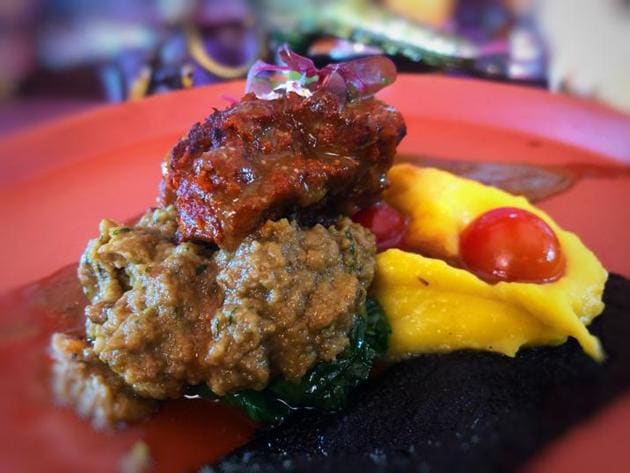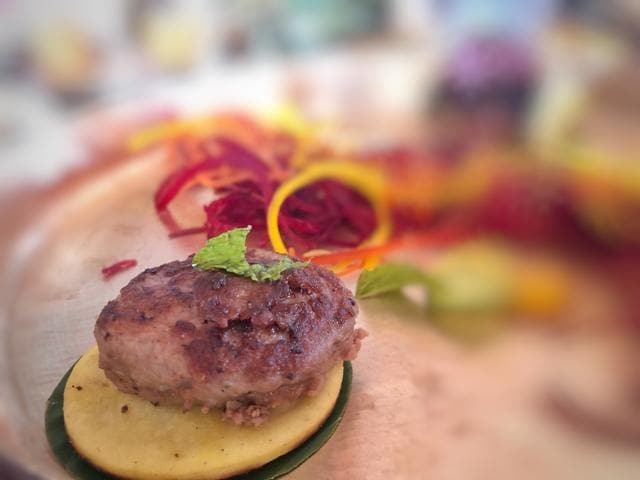A feast of lost dishes: Kunal Vijayakar looks back on a meal like no other in Rajasthan
It’s always Laal Maas, Ker Sangri and Dal Baati Churma in the desert state. But this time, I met chef Prasad Metrani at the Fairmont Jaipur, and it was a pan-India extravaganza.
I was in Jaipur. Now this is not the first time I’ve been to Rajasthan; in fact I’ve hit that trail several times before. I’ve been to Rajasthan in the bitter cold of a Jaisalmer winter and in the oppressive heat of a Jodhpur summer. To the serenity of the lakes in Udaipur and to the unyielding fervour of Ajmer Sharif.

And most often I have feasted on fine food and great meals. How can I forget Dargah Bazaar and the streets of Ajmer, the sounds, smells and flavours of the food outside the Dargah of Khwaja Moinuddin Chishti, the langar with freshly made biryani and sweet rice. The qorma and nihari with warm roti. Kachodi with kadhi, jalebi and warm milk, and Ajmer’s ever-so-famous Sohan Halwa.
I’ve also sampled the rare and illustrious Karan cuisine in Udaipur. The preserve of the Bedla clan of Mewar, recipes go back two centuries. The Smoked Baingan Bharta, Chaas, Pulaos and Kheema. Even smoked arhar dal cooked in milk and their iconic Banjara Mans, cooked nomad style with just salt and a few spices. But that’s it.
Otherwise it’s all just Laal Maas, Ker Sangri, Gatte ki Sabzi and Dal Baati Churma. Whether you are in Jodhpur, Udaipur, Jaisalmer or Jaipur, that’s all you will be served under the baldachin of Rajasthani cuisine. Any hotel you go to, any chef you meet, and it’s once again Laal Maas, Ker Sangri, Gatte ki Sabzi and Dal Baati Churma.
Till I walked up to a community table last week at the Fairmont Jaipur and met chef Prasad Metrani. I was in the Pink City to attend the third season of the Gourmet Getaway food festival, organised by the intrepid, flamboyant and stately restaurateur Dushyant Singh. There was array of foods from all over India. Bhatte di Murg and Punjabi Egg Curry Dhaba Style from Amritsar. Rogan Josh and slightly sour curd-marinated Mutton Shyaam from the kitchens of the Kashmiri Pundits.
There was a spread from the surprising Kumaoni cuisine and bits of Bengali, Italian and Thai which, along with wines and cocktails, made for a rather fulfilling evening. As part of the festival, chef Metrani cooked up a lunch the next day at the Fairmont.

It was a feast of lost dishes. Well researched and studied, a banquet was laid out in their restaurant aptly called Zarine (Persian for Golden). Amid tall pillars and arches, water bodies glistening in the background, we sat at a long table resplendent with brassware. A long silken scroll announced the dishes.
The first course: Nargil Shorba. Nargil means coconut and the base of this soup is coconut milk. It’s a recipe that they say originated among the tribal people of Gandhara, an ancient region beyond the Hindu Kush. Native to the Middle-East and Central Asia, this shorba made its way to India in the Mughal era. It’s a mild simple soup, now flavoured with coriander, green chillies and spices, and can also be cooked with meat. Chef had added vegetable gnocchi and parmesan crisps to it.
Served along with this was Tootak, which are balls of semolina and khoya stuffed with a spicy paneer mixture, brushed with saffron-rosewater and baked. It’s a Deccani recipe from the kitchens of the Nizams as well as a signature dish of the local Hindu Kayastha community especially served to welcome guests.
Next came Kamal Badal, an exotic snack of thinly sliced sundried eggplant, crisply fried lotus stem and spinach with tomato chutney. Created by the Mughals to feed hungry soldiers during their many campaigns. They needed a snack that was nutritious, could be preserved and could also be carried along. This snack could be kept for days and would not change taste, hence was called Kamal Badal.
Then came the meat. Silbatte ke Kachche Gosht ke Kabab with Tashtari. Stoneground on a traditional silbatta and smoked and flavored with clove and cardamom, the kababs are coarser than a Galawati and softer than a Shammi. Tashtari is a saffron-flavoured plate-shaped bread cooked in a clay oven. The kababs were silken, gently spiced with a slight bite on the tongue, and beautifully complemented by the Tashtari.
And there were more kababs. Katambari Kebab, a lost recipe from the royal kitchens of Maharaja Ala Singh, the first ruler of the princely state of Patiala. This kabab was allegedly invented when chicken breast was cooked in a cylindrical instrument called a phukna. This chicken breast was stuffed with cottage cheese in a sesame seed marinade and finished in a tandoor.
For mains there was Raan. Gil-e-Hikamat, Pathiyonki Raan — mutton leg cooked in a clay pot with mutton kheema in a saffron sauce. For those who preferred chicken there was Kibti, from the kitchens of the Maharaja of Patiala. Slow-cooked chick meat with saffron potato fondant, heirloom tomatoes and fenugreek.
These dishes were served with hot, steaming Doodh Shabnam Pulao, a lost recipe from Uttarakhand where Basmati is cooked with almond milk, saffron, walnut and morels.
The glorious finish was Nazakat ka Meetha, a medley of rare desserts. Puffed rice with a lehsun ki kheer. Pudding made with raw garlic and milk. Jauj ka Halwa made of wheat, milk, sugar and flour. And chikki, the kind made of puffed rice and jaggery during Baisakhi and Lohri in Punjab.
This was a meal fit for a royal, and while it wasn’t exactly Rajashthani food, it was the best food I’d eaten in Rajasthan. And what’s more, thankfully all through the meal nobody mentioned Laal Maas, Ker Sangri, Gatte ki Sabzi and Dal Baati Churma.
Stay updated with all the Breaking News and Latest News from Mumbai. Click here for comprehensive coverage of top Cities including Bengaluru, Delhi, Hyderabad, and more across India along with Stay informed on the latest happenings in World News.
Stay updated with all the Breaking News and Latest News from Mumbai. Click here for comprehensive coverage of top Cities including Bengaluru, Delhi, Hyderabad, and more across India along with Stay informed on the latest happenings in World News.






